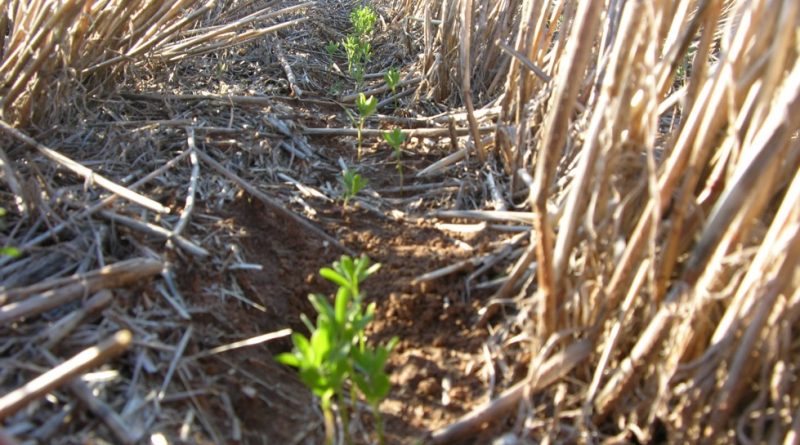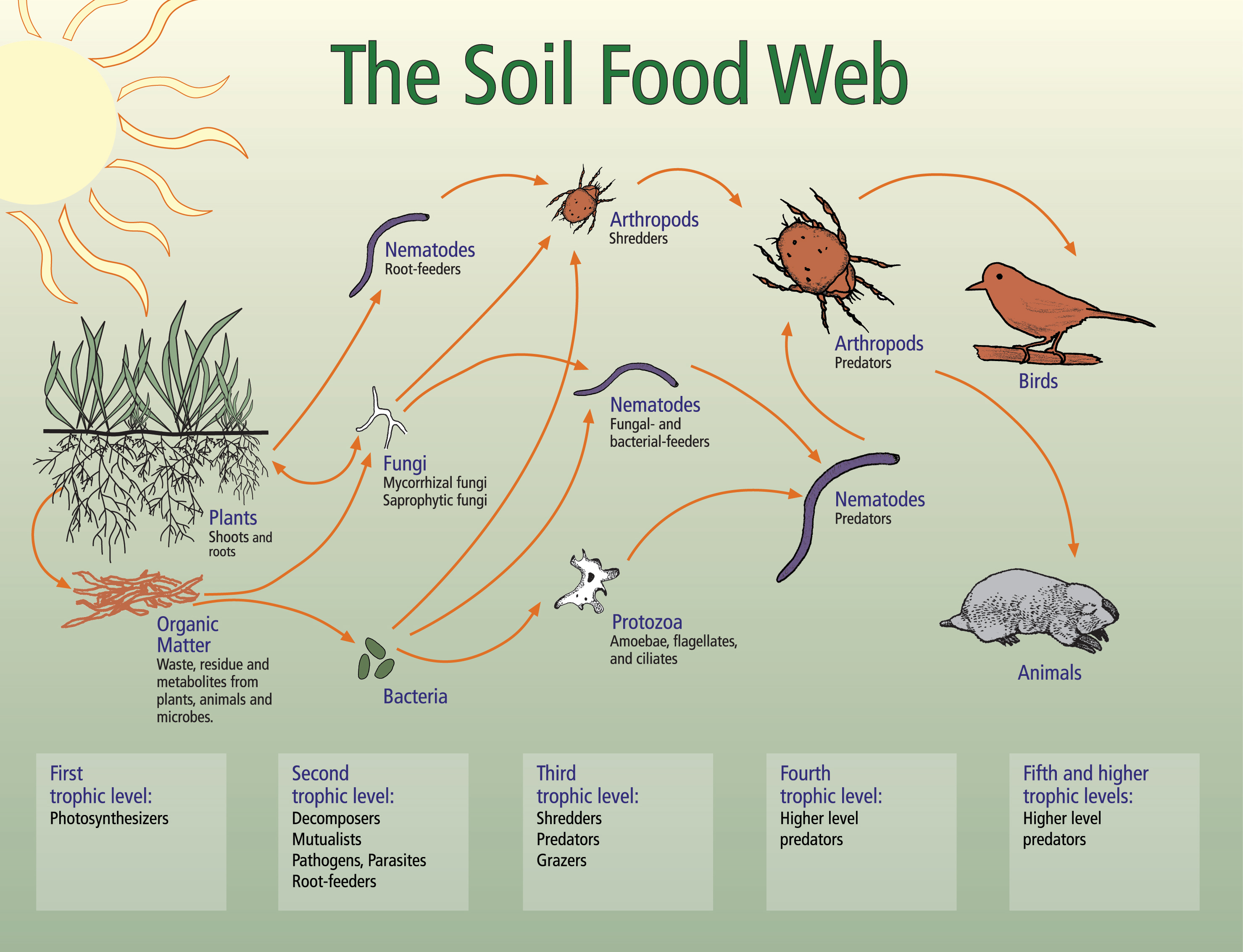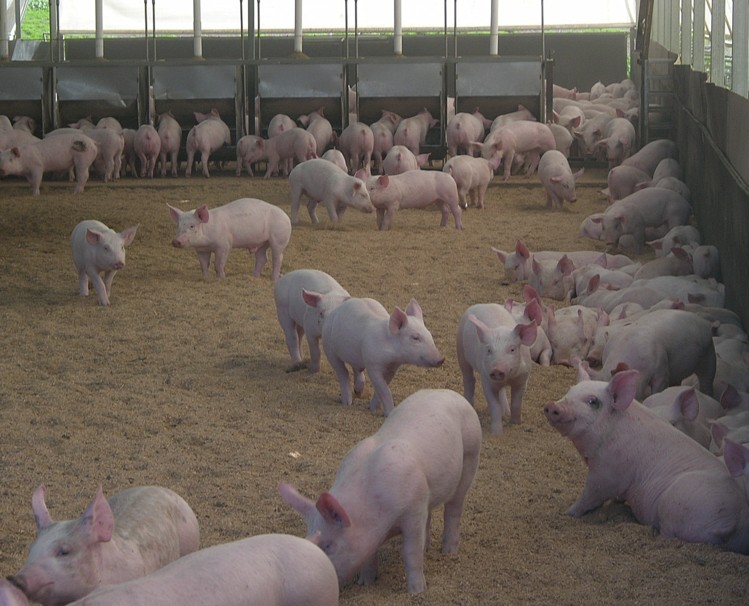Soil health farming versus conservation agriculture
– how management practices and crop productivity compare
By Grace L. Miner, Jorge A. Delgado, James A. Ippolito, Catherine E. Stewart
Introduction
Improved soil health for cropping and grazing has become the buzzword for the “regenerative agriculture” or “soil health” farming methods. The assumption being that conventional science based conservation agriculture methods and inputs do not account for or look after soil health. The consequences are poorer across farm ecosystem functions and lower nutritional quality grains. This review of long-term crop agronomy research challenges these assumptions. It suggests that many generalisations made for improved soil health and grain quality outcomes under regenerative agriculture are yet to be substantiated across highly variable and complex cropping soils and climates – Patrick Francis.
Healthy soils constitute the foundation of thriving ecosystems and societies and are directly tied to food and nutritional security, water quality, human health, climate change mitigation/adaptation, and biodiversity (Manter et al., 2017; National Academies of Sciences, 2017). It is imperative to prevent land degradation that occurs via soil erosion, nutrient losses, and losses of ecological integrity (Doran & Jones, 1996; Doran & Parkin, 1994; IPCC, 2019). Widespread implementation of management practices that promote soil health (SH), or “the continued capacity of soil to function as a vital living ecosystem that sustains plants, animals, and humans” (USDA‐NRCS, 2019), is a hopeful counter to agroecosystem land degradation.
Soil health has captured the interest of researchers, industry, policy makers, and the popular press—multiple public–private entities, researchers, and industry groups are collaboratively working on SH science and metrics, as well as supportive policies (National Academies of Sciences and Medicine, 2017; Soil Health Institute, 2017; The Nature Conservancy, 2016).
Recent reviews delineate the links between SH and human health, including the fundamental role of SH in food production, nutrition, and food security (Brevik & Sauer, 2015; Oliver & Gregory, 2015; Pepper, 2013; Steffan, Brevik, Burgess, & Cerdà, 2018; Wall, Nielsen, & Six, 2015). Concerningly, statements in the published literature also suggest that SH improvements lead to increased crop productivity and/or nutritional quality (Brevik & Burgess, 2012; Brevik & Sauer, 2015; Bünemann et al., 2018; Pepper, 2013; Wall et al., 2015).
Recent media headlines state that “Healthy soils lead to healthy food,” suggesting that SH practices will “produce crops that contain more nutrients for humans to consume” (Latzke, 2020). Language specifying greater productivity rates with SH management is also used by SH movement leaders; for example, The Nature Conservancy (2016) states, “At the farm level, the benefits of improved soil health include higher rates of productivity [emphasis added] and profitability over the long term.”
Yield outcomes of SH management are of importance to ensure that future global food demands are met (Grassini, Eskridge, & Cassman, 2013; Van Ittersum et al., 2013). The premise of linking crop productivity (i.e., harvestable crop yield per unit area) to SH relies heavily on the assumption that improvements in SH will alleviate growth‐limiting factors (e.g., via increased provision of nutrients or water to the crop, increased disease resistance) and hence improve yields (Andrews, Karlen, & Cambardella, 2004; Chaparro, Sheflin, Manter, & Vivanco, 2012).
Improvements in SH via good management can promote crop yields in systems where nutrients or water are limiting via increased nutrient cycling, nutrient availability, and/or water capture (Delgado & Follett, 2002; Foley et al., 2011).
However, a key point often missing from the SH and productivity discussion is that while increasing the supply of any growth limiting factor (e.g., water, mineral nutrients, light) increases growth rates, and potentially crop yields, the yield response diminishes as the supply of the limiting factor is increased. For example, there is a point at which application of additional nitrogen (N) fertilizer has no impact on yield, and the shape of the response curve can be strongly altered by interactions between other growth factors and/or mineral nutrients (Marschner, 1995).
In intensive, productive cropping systems, nutrients and/or water are typically heavily managed with external inputs to maximize yields. Are changes in SH due to management practices likely to lead to productivity increases in these high‐input systems? (This question is separate from the important question of whether increases in SH can reduce the amount of external inputs needed to sustain yields).
Crop yields are also dependent on factors beyond those typically considered as SH metrics (e.g., precipitation, soil temperatures, pest, disease, and weed pressures) (Hay & Porter, 2006). Management practices posited to improve SH (i.e., no‐till, residue retention, cover crops, rotation) can influence both abiotic and biotic yield components, with subsequent positive, negative, or neutral yield impacts.
The questions surrounding how SH affects the nutritional component of crop quality (e.g., both the composition and concentration of mineral or organic nutrients) are also fraught with challenges, as complex physiological and biochemical mechanisms affect the uptake, transport, synthesis, and accumulation of nutrients (Grusak & DellaPenna, 1999), and yield and nutritional quality are not always directionally aligned (Hay & Porter, 2006).
Some nutrients are “diluted” with yield, whereas others synergistically increase with yield, and outcomes vary whether yield increases are due to factors such as N fertilization or precipitation (Hay & Porter, 2006; Jarrell & Beverly, 1981). Indeed, specific components of nutritional quality may even be inversely related (e.g., negative correlations between oil and protein contents in soybean [Glycine max (L.) Merr.]), with notable instances where optimal nutritional quality is obtained at suboptimal yields or under stress (Wiesler, 2012).
Additionally, factors beyond SH (e.g., genotype, environment) regulate and influence the nutritional quality of harvested crop components (Grusak & DellaPenna, 1999; Reeve et al., 2016; Rengel, Batten, & Crowley, 1999).
While there is undoubtedly need for additional research on how SH affects crop quality, we caution against language that broadly connects improvements in SH to improvements in crop nutritional quality without substantive and quantitative support. The shortage of peer‐reviewed studies that have explicitly examined linkages between management practices, SH, and crop quality precludes substantive discussion (but cf. Miner et al., 2020; Wood, Tirfessa, & Baudron, 2018). Hence, we focus the remainder of this commentary on the linkages between SH metrics, SH practices, and crop productivity.
SOIL HEALTH INDICATORS AND METRICS
Efforts to link SH to productivity are confounded by the lack of consensus on what constitutes a “healthy soil” and what indicators and frameworks are most appropriate (Bünemann et al., 2018; Doran & Jones, 1996; Doran & Parkin, 1994; Moebius‐Clune et al., 2016; Rinot, Levy, Steinberger, Svoray, & Eshel, 2019; Stewart et al., 2018; Wander et al., 2019). Linking SH to yields is further confounded by the fact that assessment tools have not typically linked SH metrics to this basic agronomic outcome; yield data are only rarely evaluated or reported in assessment frameworks, and studies that report changes in both SH indicators and yields with management are the exception, not the norm (Bünemann et al., 2018; Stewart et al., 2018).
While soil organic matter (SOM) is widely considered the primary SH indicator due to its positive correlation with numerous biological, chemical, and physical SH indicators, direct evidence linking greater SOM to increased yields (independent of exogenous organic inputs) is limited (Oldfield, Wood, Palm, & Bradford, 2015), and much work remains to be done to disentangle regionally specific controls and causative interactions of management, soil type, and climate on the SOM–yield relationship (Lal, 2020; Oldfield, Bradford, & Wood, 2019).
Only a few studies have probed the relationship between other SH indicators (e.g., aggregate stability, labile soil carbon, soil respiration) and crop yields (Lucas & Weil, 2012; Stine & Weil, 2002 and references therein), with sometimes differing conclusions even from the same dataset (Roper, Osmond, Heitman, Wagger, & Reberg‐Horton, 2017; van Es & Karlen, 2019).
Despite a shortage of studies directly linking individual or composite SH metrics to crop yields, there is a wealth of data on how the practices advocated for developing SH influence yields, and this data can be used to inform the questions surrounding how management‐induced shifts in SH may affect yields.
Four principles have been promoted for maximizing SH:
(a) minimize disturbance (no‐till),
(b) maximize plant diversity,
(c) maintain living roots throughout the year, and
(d) maximize soil coverage (USDA‐NRCS, 2019).
These principles are nearly identical to those of conservation agriculture (CA), which have been posited for at least two decades.
Conservation agriculture is defined as:
(a) minimal soil disturbance or no‐till,
(b) permanent soil cover via crops, cover crops, or mulch,
(c) and diversified crop rotations (Hobbs, Sayre, & Gupta, 2007).
Notably, “true” CA requires meticulous application of all three principles, and outcomes of CA can vary depending on whether principles are applied concurrently or individually and can also depend on factors like percentage of residues retained, amount of disturbance, and management duration (Derpsch et al., 2014; Nouri et al., 2020; Pittelkow et al., 2015a).
CA and SH principles overlap
The overlap of CA and SH principles is deeply advantageous but not frequently highlighted.
While the SH frameworks are comparatively recent initiatives, thousands of published studies over multiple decades compare yield outcomes under conventional versus CA practices (Giller et al., 2015; Pittelkow et al., 2015a; Pittelkow et al., 2015b; Rusinamhodzi et al., 2011). This extensive body of literature provides a robust lens for probing the potential yield outcomes of managing for SH, and it should be harnessed to frame and identify what questions have already been adequately addressed and to target questions that require additional study.
Yield benefits of varying cropping rotations over continuous monoculture are well established; possible yield‐boosting “rotational effects” include increased nutrient availability and decreased insect, weed, and disease pressures, among others (Beal Cohen, Seifert, Azzari, & Lobell, 2019; Bullock, 1992; Seifert, Roberts, & Lobell, 2017). While we acknowledge and support the benefits of rotation as a SH building practice, we focus in this commentary on how the SH/CA practices of no‐till and cover crops may affect crop productivity.
MINIMIZING SOIL DISTURBANCE (NO‐TILL) AND CROP YIELDS
No‐till practices, which reduce mechanical soil disturbance to an absolute minimum, can have important economic and environmental benefits (e.g., reduced field operations, reduced erosion, retention of nutrient‐rich top soil, improved water capture and retention) (Delgado et al., 2019; Hobbs et al., 2007; Mosquera et al., 2019), yet the yield impacts of no‐till are nuanced and context dependent, as well as dependent on management duration (Daigh et al., 2018; Nouri et al., 2020).
There is evidence of near‐ and long‐term yield reductions with no‐till in some cropping systems (Giller et al., 2015; Pittelkow et al., 2015a; Rusinamhodzi et al., 2011). A recent global meta‐analysis compared yields under no‐till versus conventional tillage using more than 5,000 paired yield observations across crop types and found an overall yield decline of −9.9% when no‐till was implemented alone (Pittelkow et al., 2015a). Yield declines were lessened when no‐till was coupled with residue retention (−5.2%) or rotation (−6.2%), and negative yield impacts were further reduced when all three practices were concurrently applied (−2.5%) (Pittelkow et al., 2015a).
Near‐term (1‐2 yr) versus long‐term (10+ yr) impacts differed depending on whether no‐till was used alone (i.e., near‐and long‐term yield declines) or if no‐till was stacked with other CA practices (near‐term yield declines dissipate in the mid‐ and long‐term). While yield gaps may dissipate with time for many crops, this is important information to producers and adopters that is not frequently reported.
Yield benefits were realized only in select agroecosystems (i.e., dry, water‐limited climates) when no‐till was coupled with residue retention, supporting the benefits of no‐till in water‐limited regions (Hobbs et al., 2007).
A separate analysis of the dataset by crop type indicated that in oilseed, cotton (Gossypium hirsutum L.), and legume crops, no‐till yields matched conventional tillage yields, whereas negative yield impacts were apparent for corn (Zea mays L.) (−7.6%) (Pittelkow et al., 2015b). Near‐term yield declines with no‐till were evident across crops but dissipated after 3–10 yr for all crops except for corn and wheat (Triticum aestivum L.) in humid climates, indicating an area where additional understanding of yield gaps is needed in order to concurrently optimize environmental, economic, and yield outcomes.
Another recent study in the midwestern United States reported that tillage had virtually no effects on long‐term corn and soybean yields (Daigh et al., 2018), whereas results from a study in Illinois found no‐till lowered yields of corn and soybean compared with conventional tillage (Behnke, Zuber, Pittelkow, Nafziger, & Villamil, 2018). These differing results suggest that a regional approach that accounts for crop type, duration of management, and co‐application of other SH management principles is critical in evaluating no‐till yield impacts.
COVER CROPS AND CROP YIELDS
Cover crops (CC) provide a multitude of ecosystem benefits, including reductions in erosion and nutrient losses, increases in nutrient scavenging and cycling, and N fixation by symbiotic bacteria in legume CCs (Blanco‐Canqui et al., 2015; Chen & Weil, 2011; Dabney et al., 2010; Dabney, Delgado, & Reeves, 2001; Delgado, Dillon, Sparks, & Essah, 2007; Schipanski et al., 2014; Snapp et al., 2005; Valkama, Lemola, Känkänen, & Turtola, 2015).
Cover crop impacts on marketable cash crop yields are dependent on variables such as crop rotation, climate, growing season length, tillage, soil type, CC species, timing and method of termination, and years in CC.
There are management and yield risks of incorporating CCs into a rotation—CCs can compete with the main crop for resources like water and N and can impede establishment of the cash crop (Dabney et al., 2001; Finney, White, & Kaye, 2016; Marcillo & Miguez, 2017; Schipanski et al., 2014; Snapp et al., 2005). For example, the carbon‐to‐nitrogen (C/N) ratio and total N content of CCs can positively or negatively affect the N supply to the following crop—incorporation of residue from CCs with a high C/N ratio is likely to result in N immobilization, reducing soil N supply to the following crop, and potentially raising N fertilization requirements, whereas incorporation of legume CCs with a low C/N ratio and high N content can increase N availability to the cash crop (White et al., 2017).
Cover crops moderate soil temperatures by intercepting radiation and insulating the soil surface, which can have positive yield impacts in warm climates but detrimental impacts in cool climates if soil warming is delayed and crop establishment is adversely impacted (Blanco‐Canqui et al., 2015; Snapp et al., 2005). Additionally, while CCs can increase water capture and decrease evaporative losses, CCs also use soil water, which can have neutral, positive, or negative impacts on the subsequent cash crop yields depending on the climate (Unger & Vigil, 1998).
In water‐limited semi‐arid agroecosystems of the central and southern Great Plains, for example, most studies have shown reductions in crop yields following CCs due to soil water depletions (Nielsen et al., 2016; Robinson & Nielsen, 2015; Unger & Vigil, 1998).
In systems where water is not limiting, CC yield impacts are variable and dependent on the management factors denoted above. A recent metanalysis of corn yield responses under winter CC systems across the United States and Canada reported a neutral impact of grass winter CC on corn yields, an increase in corn yields with legume winter CC when N fertilizer rates were low or the system shifted from conventional tillage to no‐tillage, and an increase in corn yields with mixture winter CCs (Marcillo & Miguez, 2017).
A summary of CC yield impacts from 17 studies in temperate U.S. regions reported that CCs increased subsequent cash crop yields in 11 studies, had no yield impacts in 6 studies, and reduced yields in 2 studies (Blanco‐Canqui et al., 2015). An 8‐yr study in the U.S. Midwest found a neutral impact of CCs on corn and soybean yields (Olson, Ebelhar, & Lang, 2010). Similarly, the inclusion of CCs in a corn–soybean rotation in the Midwest did not affect cash crop yields in either tilled or no‐till systems, and crop yield increases with CCs were not realized in the short term (Dozier, Behnke, Davis, Nafziger, & Villamil, 2017).
In a Pennsylvania cropping system, CCs with low C/N ratios increased corn yields, whereas high C/N ratios decreased yields (Finney et al., 2016). Another Pennsylvania study reported that corn yields following CCs were negatively correlated with CC C/N ratio, whereas CCs did not affect soybean and wheat yields, and multispecies mixtures did not negatively affect corn, soybean, or wheat yields (Hunter et al., 2019).
Collectively, these results suggest that in temperate, water‐rich environments, negative yield impacts of CCs can be minimized or negated by selecting CCs with low C/N ratios, increasing the proportion of legumes in mixtures, and/or applying additional N fertilizer; these studies also underscore that ecosystem benefits of CCs can be realized in some systems while maintaining or enhancing cash crop yields (Finney et al., 2016; Hunter et al., 2019).
However, these studies also underscore the variable yield responses that can occur with CCs due to differences in management practices. Variations in CC management are overlaid on the complexity of agroecosystems, regional differences in soil types, growing season, precipitation patterns, and disease and pest pressures, all which prevent generalized statements regarding CC impacts on cash crop yields and instead merit regionally based assessments.
RESILIENCE, YIELD STABILITY, AND INPUT REDUCTION
Questions remain surrounding how SH practices affect yield stability (variability and reliability of production across years) and resilience to perturbations and extreme weather (Foley et al., 2011). A recent meta‐analysis found that yield stability did not differ between no‐till and conventionally tilled fields, with some evidence of reduced stability of no‐tillage systems in humid climates compared with dry climates (Knapp & van der Heijden, 2018).
However, this study grouped data from diverse systems, geographic regions, and crops, and stability impacts of SH practices should be examined for specific cropping systems at the local and regional scale. Similarly, the yield‐stability benefits of SH practices such as CCs may only appear in specific systems in the mid‐ to long term, with some authors positing that “in the long‐term, many of the ecosystem services that cover crops provide may improve resilience with positive feedbacks to yield stability, reduced external input requirements, and profitability” (Schipanski et al., 2014, p. 21).
A fuller understanding of how SH practices affect both short‐ and long‐term resilience and yield stability at the local and regional level is vitally important, yet critically missing. Another question that necessitates further fundamental research is whether management practices that improve SH can meaningfully reduce the amount of external inputs needed to sustain yields (Lal, 2020), thereby mitigating economic costs and minimizing environmental degradation due to nutrient losses (Foley et al., 2011).
We posit that the scientific community should harness existing available data from long‐term experiments and the body of CA literature to probe questions surrounding how SH practices influence mid‐ and long‐term input requirements, system resilience, and yield stability (e.g., Luce et al., 2019), as well as the time required to realize benefits (Nouri et al., 2020) and the longevity and persistence of effects.
CONCLUSIONS
Soil health management techniques can have multifaceted environmental and economic benefits, yet it is still unclear as to where and when yield and yield stability benefits of SH management may occur.
Producers, policy makers, and conservation and industry groups need accurate, and regionally specific, summarizations of potential yield outcomes correlated to implementing SH practices—where is optimism surrounding yield and yield stability improvements warranted, what benefits may be only realized in the mid‐ to long‐term, and where may yield declines persistently occur?
Long‐term data from CA experiments indicate that yield impacts of no‐till are regionally specific and dependent on crop type and duration of management, with benefits more consistently realized in water‐limited regions. Similarly, CC yield effects are also dependent on multiple factors, including management, CC type, and geographic region, with benefits more consistently realized in water‐rich agroecosystems.
Overarchingly, there is a need for synthesis and analysis of regional‐scale yield impacts imparted by SH practices, with accompanying mechanistic probing of the factors underlying positive or negative yield outcomes (e.g., are yield differences attributable to variations in water or nutrient dynamics, crop establishment, soil temperatures, disease incidence, etc.). Additionally, there are important outstanding questions surrounding how SH metrics and SH practices may influence the nutritional component of crop quality.
The connections between SH practices, individual or indexed SH metrics, crop quality, crop yields, and yield stability are only beginning to be systematically and mechanistically explored at the regional scale. Testing these connections will require data from long‐term experiments across different climates and management scenarios, with co‐monitoring of changes in SH, yields, crop genotypes, and quality outcomes. Probing these worthwhile questions will require cooperation across diverse disciplines such as agronomy, soil science, crop physiology, and human and animal nutrition.
Take home messages:
- Soil health management can have multifaceted ecological and economic benefits.
- Crop yield and quality increases are not inevitable outcomes of soil health management.
- Management and soil health impacts on crop quality are poorly quantified.
- Yield outcomes of soil health practices are variable and regionally specific.
- Soil health initiatives must credibly delineate yield and quality outcomes.
Source: Agricultural and Environmental Letter 14 July 2020. For full text and references visit https://doi.org/10.1002/ael2.20023
Lead author Grace Miner is a scientist with the Dept. of Soil and Crop Sciences, Colorado State Univ., Fort Collin USA. She is a member of the American Society of Agronomy, Crop Science Society of America and Soil Science Society of America
Abbreviations:
· CA conservation agriculture
· CC cover crop
· SH soil health
· SOM soil organic matter.




